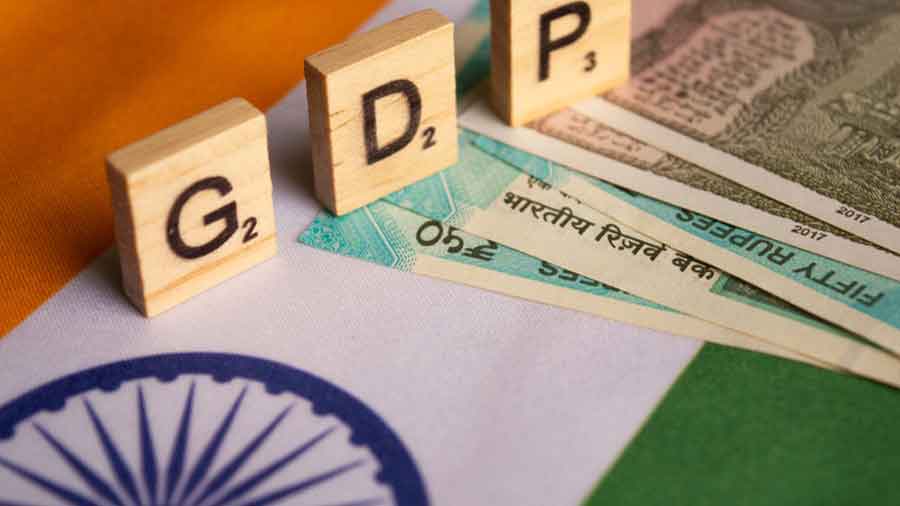India’s nominal GDP (gross domestic product) growth could tumble to 7-7.5 per cent, led by easing inflation and other factors such as a slower global economy.
A single digit growth will be the first for nominal GDP in over 50 years, Motilal Oswal said on Friday. The brokerage forecast that after growing strongly for two consecutive years, India’s real GDP growth would decelerate to 5.2 per cent in 2023-24, while nominal GDP growth would weaken even more sharply to 7-7.5 per cent.
According to its analysts, the drop in nominal growth will be mainly on account of a fall in inflation. Factors such as a slowing global economy, fading pent-up demand and normalising base effects will also bring down growth.
“With an expected retail inflation print at just 4.3 per cent and a mere 1 per cent growth in the wholesale price index (WPI) in 2023-24, GDP deflator could be around 2 per cent, dragging down India’s nominal GDP growth to the lowest level compared to any year between early 1970s and 2018-19 (i.e., half-a-century pre-Covid period). Such a slow growth rate would have some serious implications for the macro-economy and financial markets,’’ it added.
In 2021-22, the nominal GDP growth rate stood at 19.5 per cent, while the average growth rate was 13.6 per cent between 2003-04 and 2018-19.
GDP deflator is a measure of inflation and it shows the extent to which the growth in GDP has occurred because of higher prices, instead of the increase in output.
The tepid nominal growth would adversely affect the performance of corporate India, lead to a rise in government debt to GDP and impact bank credit, it added.
On corporate performance, the note said the revenues of listed companies is highly co-related with nominal GDP growth (and WPI-inflation).
In the event of a single-digit nominal GDP growth, corporate sales growth is expected to weaken from an average of over 30 per cent (year-on-year) in the past seven quarters to single digits in the next fiscal.
Balance of payments
India is set to post a balance of payment (BoP) deficit for the second straight year in the next fiscal, which would be the first such instance in two decades, Standard Chartered Bank said on Friday.
The foreign bank expects the country to record a BoP deficit of $24 billion this fiscal year and $5.5 billion in the next, against a surplus of $47.5 billion last year.
“Higher commodity prices, better growth in India compared to the rest of the world and higher global interest rates amid cautious risk appetite could keep the current account deficit wide and contain capital inflows in FY24,” Anubhuti Sahay, head of South Asia Economic Research (India) at Standard Chartered Bank, India, said in a note.
The foreign bank expects current account balance to slip into a deficit of 3 per cent of gross domestic product this financial year from a surplus of 0.9 per cent last year, before narrowing to 2.6 per cent in fiscal year 2023-2024.
The BoP dynamics next year could be dominated by an absolute current account deficit (CAD) financing requirement of around $100 billion, given the chances of higher global rates keeping debt-investment inflows cautious.
The potentially improved risk appetite in the second half of the year could lead to net positive portfolio inflows,” the bank said.
With inputs from Reuters











